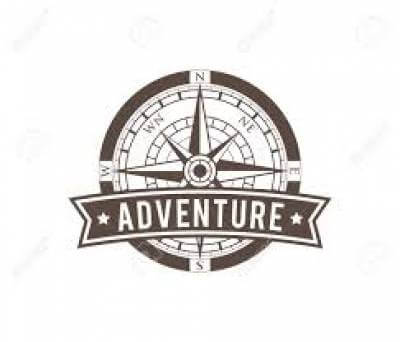NAYA KHANG PEAK CLIMBING
This trek has everything you would wish to see in the Himalayan Mountains. Soaring snow-capped peaks, monasteries and high altitude passes are just a sample of what is on offer in this adventure in the Langtang district of Nepal. The highlight of this climbing adventure is reaching the summit of Naya Khang Peak (5846m), also identified as Ganja La Chuli Peak. This region is also home to numerous Tamang Tibetan villages and has a profusion of flora and fauna unique to Nepal. This is a less-trekked to a destination that guarantees greater solitude and peace. Naya Khang (5846m) lies to the east of Kyanjin Gompa (3850m) and to the west of Ganja La Pass (5110m).
On the trail you will see several enormous snow covered peaks: Yala (5,500m), Pemthang Ri (6836m), Dorje Lakpa (6966m), Langshisha Ri (6370m), Langtang Lirung (7425 m), Shishapangma (8064m) and the Jugal Himal Ranges situated right on the Tibetan border.
Along the trail you will pass through rhododendron, bamboo and oak forests, trek along the Langtang Khola (river), through Ghoda Tabela (2950m) a grazing area for horses in Langtang and past the famous Kyanjin Gompa (monastery). The trail begins at Syabrubesi Village where we follow the trail along the banks of the Langtang Khola (river) until we reach Kyanjin Village. We slowly adjust to the higher altitudes – helping the acclimatization process. Along the way you will pass many colorful Tibetan prayer flags, chortens and observe proof of a rich Buddhist history in the region. There are waterfalls, glaciers, serene valleys with yaks & goats grazing, and if we are lucky we will spot a red panda or even the most elusive Snow Leopard.
The trek is strenuous and requires a reasonable level of fitness, but with the right preparation – and attitude, it is possible to successfully complete this trek.
Sherpa Expedition Teams, with over 40 years of trekking, have a great reputation in the trekking and climbing industry and guarantee to put your safety and wellbeing first. All permits, meals and accommodation will be taken care of.
ITINERARY
Day 1 : Arrive at Kathmandu (1345m) and transfer to hotel.
Sherpa Expedition & Trekking staff will be there to greet you at Tribhuvan International Airport and take you to your hotel, followed by a briefing covering information, dos, and don’ts of your trek. Your safety and comfort are paramount.
Day 2 : Drive from Kathmandu to Syabrubensi (1,400m) Duration: 7-8 hours.
Leaving Kathmandu we set off on a seven-hour journey by road heading to the Langtang Valley. As the road climbs out of Kathmandu Valley we will be afforded views of the Annapurna Mountains in the west and directly ahead to Manaslu, Ganesh Himal, and the numerous peaks in the Langtang region. We first come to Trishuli Village and then continue climbing until we reach Dhunche and enter the Langtang National Park. After leaving Dhunche we drive for another hour downhill until we reach Syabru Besi where we stay the night.
Day 3 : Trek from Syabru Besi to Lama Hotel (2470m) Duration: 5-6 hours.
Leaving Kathmandu we set off on a seven-hour journey by road heading to the Langtang Valley. As the road climbs out of Kathmandu Valley we will be afforded views of the Annapurna Mountains in the west and directly ahead to Manaslu, Ganesh Himal, and the numerous peaks in the Langtang region. We first come to Trishuli Village and then continue climbing until we reach Dhunche and enter the Langtang National Park. After leaving Dhunche we drive for another hour downhill until we reach Syabru Besi where we stay the night.
Day 4 : Trek from Lama Hotel to Langtang Village (3430m) Duration: 5-6 hours.
Today the trail takes us toward Ghode Tabala from where we will have our first views of the enormous mountain Langtang Lirung (7227m). The trail takes us through a Rhododendron forest – more spectacular during spring when it is in full pink bloom. There is also a national park office here. Today’s trek will take between four to five hours before reaching Langtang Village (3450m) where we will stay the night.
Day 5 : Trek from Langtang village to Kyanjin Gompa (3800m) Duration: 3-4 hours.
The trail today of about five to six hours takes us across the Bhote Kosi (meaning Tibet River) which flows from Tibet. The trail then climbs through sub-tropical forest and then joins the trail coming from Syabru Besi, and then ascends through oak and rhododendron forests. On the trail it is very likely we will encounter Langur monkeys in the tree tops. The trail continues up a steep incline before reaching the Lama Hotel where we stay the night.
Day 6 : Acclimatization & rest day at Kyanjin Gompa (3800m).
This is essentially a rest day that will give you time to acclimatize before heading to higher altitudes. Health professionals recommend staying active, so today we will trek to Cherko RI (4984m) and admire the amazing views from the peak. It will take about 5 to 6 hours to complete the journey there and back. This is considered one of the best places to view the surrounding mountains of the Langtang region. Tonight we will stay at Kyanjin Gompa.
Day 7 : Trek from Kyanjin Gompa to Nyengang Kharka (4430m) Duration: 5-6 hours.
Today we head to higher altitudes and will spend about five to six hours until we arrive at Nyengang Kharka where we will stay the night.
Day 8 : Trek Naya Kang High Camp (4960m) duration: 4-5 hours.
Again we set out to higher altitudes which further prepares us and assists in climbing to Naya Kharka Peak. We will stay at high camp overnight.
Day 9 : Climb from High Camp to summit of Naya Kang Peak (5844m) & return to Nyengang Kharka; 9-10 hours.
We have a hard day ahead of us today of about eight to nine hours ascending to the peak. Ideally we should reach the peak around lunchtime and be blessed with panoramic views of Shishapangma, Dorje Lakpa, Gangchempo, Naya Kang, Tserko Ri and Langtang Lirung. This is a marvelous photo opportunity and after some time to rest we will head down to base camp and on to Nyengang Kharka for the night.
Day 10 : Extra day in case of bad weather and health related problems.
We have set aside an extra day in the event that the weather is not suitable for climbing.
Day 11 : Trek Nyengang Kharka to Kyanjin Gompa (3800m) Duration: 5-6 hours.
Today we descend for five to six hours back to Kyanjin Gompa where we will stay overnight.
Day 12 : Trek from Kyanjin Gompa to Lama Hotel (2470m) duration: 5-6 hours.
As we descend we will follow the Langtang Khola, first reaching Langtang Village and on then Ghora Tabela where we may stop for a lunch break. A five to six hour trek to lower altitudes will see us back at Lama Hotel for an overnight stay.
Day 13 : Trek from Lama Hotel to Syabrubesi (23800m) via Sherpa Gaon; duration: 5-6 hours.
A five to six-hour trek follows a steep trail through birch and bamboo forests, and along the banks of Langtang River as we follow the valley to the mostly Tamang village of Syabrubesi where we stay overnight.
Day 14 : Drive from Syabru Besi to Kathmandu (1338m) duration: 6-7 hours.
An early start to the day has us heading back to Kathmandu following the pretty Trishuli River Valley and with great views over fields and lush forest, along with some farewell views of the mountains.
Day 15 : International departure from Kathmandu Airport.
Sherpa Expeditions & Trekking staff will transfer you to the airport for your final departure from Nepal. We hope that this epic trek will be firmly ingrained in your memory and will be enough to prompt you to consider your next trek with us!
SERVICES
Costs Included In Your Package
- Airport picks up and transports by private Car/Jeep.
- Two Night's hotel accommodation In Kathmandu with breakfast (3 star Hotel)
- Transportation from Kathmandu to Syafrubesi and back to Kathmandu via public bus.
- All standard meals (lunch, dinners & breakfast) during the trek.
- Tent Camp accommodation during the climbing
- Nayakhang Peak climbing Permit fee
- Best possible teahouses, lodge accommodation (generally twin share rooms)- during the trek
- Government licensed holder English speaking trek leader (10 or more trekkers an assistant guide) and porter to help carry your luggage.
- Strong, helpful Sherpa porters with proper safety equipment and walking equipment, his salary, food, accommodation, and insurance (one porter for two people).
- Guides and porters provided by Sherpa Trekking & Expeditions, including their meals, insurance, salary, lodging, transportation, and other necessary equipment
- All the required permits and paper works( Langtang National park permit, TIMS etc)
- All government, local taxes, and official expenses
- Assistance in arranging rescue operations in case of complicated health conditions such as altitude sickness (funded by travel insurance)
- Souvenir - Sherpa Trekking & Expeditions t-shirt
- Use of sleeping bag, down jacket, duffel bag, and walking poles (if you don’t have your own, to be returned after the trip is completed).
- Sherpa Expedition and Trekking’s certificate of appreciation & completion after the successful trek
- Oxygen meter to check your pulse and oxygen saturation and heart rate twice daily (Very useful to check Altitude Mountain Sickness(AMS) symptoms) which will ensure your health during the trek.
Costs Exclude
- International airfaresNepal entry visa fee (easy to obtain the visa on arrival at Tribhuvan International Airport – Kathmandu). $30 USD for 15-day, $50 USD for 30 Days, and $125 USD for 90 Days visa.
- Extra night’s accommodation in Kathmandu due to early arrival or late departure or early return from the trek.
- All the alcoholic and nonalcoholic, soup, tea, coffee, hot chocolate, cocoa, mineral water, extra food, cold and hot drinks on trek ( i.e. those you choose to purchase along the way and during evenings in the tea houses)
- All desserts & sweet things like chocolate, cake, pie, pudding.
- Hot shower and battery charging at the tea houses.
- Lunch and dinner in Kathmandu
- Personal clothing and gear
- Travel insurance which has to cover emergency high-altitude rescue and evacuation (compulsory)
- Tips for guide and porters (recommended in our culture – and well deserved too!)
- Additional costs or delays caused by events beyond our control, for example, landslides, severe weather conditions, itinerary modification due to safety concerns, illness, change of government policies & strikes.
- All the costs and expenses which are not listed in "costs include" will be counted as exclusions.
EQUIPMENTS
You will be carrying all of your gear and share some of the cluster gear. Keeping your pack light is important, so choose light-weight clothing and equipment. Be sure to have a range of clothing suitable for all conditions. Sudden change of weather may require layering of clothing. Three layers will meet your needs. Avoid cotton or fabrics that do not maintain heat when cold. Comfortable durable wool (or proven fabrics) that breathe and expel sweat lends itself to an additional pleasant experience!'
We will offer complimentary water and a windproof duffle that you'll use on the trek - carried by porters. The duffle is yours to keep once at the end of the trek. You can safely leave your bag, together with your non-trekking requirements, at our office in Katmandu and collect them upon your return.
All equipment, such as base camp tents, room accessories, climbing rope, ice screws, snow bar and ice hammer is provided by Sherpa Expedition & Trekking.
Upper Body:
- Base Layers: Moisture-wicking and quick-drying shirts and thermal tops.
- Insulation Layers: Fleece or down jackets to provide warmth.
- Waterproof Shell Jacket: A durable and breathable jacket to protect against wind and rain.
- Softshell Jacket: A lightweight and water-resistant jacket for added protection.
- Climbing Harness: A comfortable harness to secure yourself to the rope.
- Helmet: A strong and well-fitting helmet to protect your head from falling objects.
- Gloves: A combination of lightweight liner gloves and insulated gloves or mittens for warmth and dexterity.
- Buff or Neck Gaiter: To protect your neck and face from cold and wind.
- Sunglasses: Polarized and UV-protected sunglasses to shield your eyes from the sun and snow glare.
- Goggles: Ski or mountaineering goggles for added eye protection in extreme weather conditions.
Lower Body:
- Base Layers: Moisture-wicking and quick-drying thermal bottoms.
- Insulation Layers: Fleece or insulated pants for added warmth.
- Waterproof Shell Pants: Durable and breathable pants to protect against wind, rain, and snow.
- Softshell Pants: Lightweight and water-resistant pants for added protection.
- Mountaineering Boots: Sturdy and insulated boots designed for snow and ice.
- Crampons: Attachable spikes that provide traction on icy terrain.
- Gaiters: Waterproof and breathable gaiters to keep snow out of your boots.
- Socks: A combination of moisture-wicking liner socks and thick, warm mountaineering socks.
Other Essential Items:
- Backpack: A spacious and sturdy backpack to carry your climbing gear and personal belongings.
- Sleeping Bag: A warm and lightweight sleeping bag that can withstand sub-zero temperatures.
- Trekking Poles: Adjustable trekking poles for added stability and support.
- Headlamp: Essential for climbing in low-light or dark conditions.
- Water Bottles: Insulated water bottles to keep your water from freezing.
- Sunscreen: High SPF sunscreen to protect your skin from the strong sun at high altitudes.
- First Aid Kit: A comprehensive first aid kit with essential medications and supplies.
- Climbing Snacks: Energy bars, nuts, and other lightweight snacks for quick fuel during the climb.
It is important to invest in high-quality gear and ensure that everything fits properly and is in good condition. Additionally, consult with experienced climbers or a professional guide to ensure you have all the necessary gear and receive proper training on how to use it effectively and safely.
GOOD TO KNOW
Naya Khang Peak is a popular climbing destination in the Langtang region of Nepal. Here are some important details you should know before planning your climb:
1. Location: Naya Khang Peak is located in the Langtang Valley of the Himalayas, near the Tibetan border. It lies to the southwest of the Ganja La Pass.
2. Altitude: The peak stands at an elevation of 5,844 meters (19,173 feet) above sea level.
3. Difficulty Level: Naya Khang Peak is considered a technical climb and is suitable for experienced climbers. It requires basic mountaineering skills, including the use of ice axes, crampons, and ropes.
4. Permits: Climbing Naya Khang Peak requires obtaining a climbing permit from the Nepal Mountaineering Association (NMA). You will also need a Langtang National Park entry permit.
5. Best Time to Climb: The best time to climb Naya Khang Peak is during the spring (March to May) and autumn (September to November) seasons. These months offer stable weather conditions and clear skies, providing better visibility and safety.
6. Duration: The climbing expedition typically takes around 16-18 days, including acclimatization and trekking to the base camp.
7. Accommodation: During the trek, you will find teahouses and lodges in the Langtang Valley for accommodation. However, while climbing Naya Khang Peak, you will need to set up tents at the base camp and higher camps.
8. Guides and Sherpas: It is highly recommended to hire a professional guide or Sherpa who has experience climbing in the region. They can provide guidance, support, and ensure your safety throughout the climb.
9. Equipment: You will need to bring your own climbing gear, including mountaineering boots, harness, helmet, ice axe, crampons, ropes, and appropriate clothing for high-altitude conditions. It is essential to have proper gear and be well-prepared for the climb.
10. Safety Considerations: Climbing Naya Khang Peak involves certain risks due to the high altitude and technical difficulties. It is crucial to have prior mountaineering experience, good physical fitness, and acclimatization to reduce the risks. Always follow the guidance of your guide and be aware of weather conditions and avalanche risks.
Remember, climbing Naya Khang Peak requires proper planning, preparation, and experience. It is advisable to consult with professional mountaineering agencies or local experts for detailed information and assistance in organizing your climb.
MAP
PHOTOS/Videos
Departures
Select a departure month
Fill out the form below and a Travel Expert will reach out to create your perfect tour.
FAQS
How long does it take to climb Naya Khang Peak?
The climbing expedition typically takes around 12-18 days, including acclimatization and trekking to the base camp. The exact duration may vary depending on factors such as weather conditions and individual fitness levels.
Do I need previous climbing experience to climb Naya Khang Peak?
Yes, Naya Khang Peak is considered a technical climb and requires prior mountaineering experience. Basic mountaineering skills, including the use of ice axes, crampons, and ropes, are necessary. It is recommended to have experience with high-altitude climbing and glacier travel.
Do I need a climbing permit for Naya Khang Peak?
Yes, you need to obtain a climbing permit from the Nepal Mountaineering Association (NMA) to climb Naya Khang Peak. The permit can be obtained through a registered trekking agency or a licensed climbing guide.
When is the best time to climb Naya Khang Peak?
The best time to climb Naya Khang Peak is during the spring (March to May) and autumn (September to November) seasons. These months offer stable weather conditions and clear skies, providing better visibility and safety.
What kind of accommodation is available during the climb?
During the trek to Naya Khang Peak, you will find teahouses and lodges in the Langtang Valley for accommodation. However, while climbing the peak, you will need to set up tents at the base camp and higher camps.
Is it necessary to hire a guide or Sherpa for Naya Khang Peak climbing?
It is highly recommended to hire a professional guide or Sherpa who has experience climbing in the region. They can provide guidance, support, and ensure your safety throughout the climb. A guide can also assist with logistics, permits, and equipment.
What equipment do I need for climbing Naya Khang Peak?
You will need to bring your own climbing gear, including mountaineering boots, harness, helmet, ice axe, crampons, ropes, and appropriate clothing for high-altitude conditions. It is essential to have proper gear and be well-prepared for the climb. Consult with your guide or a climbing expert for a detailed equipment checklist.
Are there any safety considerations for climbing Naya Khang Peak?
Climbing Naya Khang Peak involves certain risks due to the high altitude and technical difficulties. It is crucial to have prior mountaineering experience, good physical fitness, and acclimatization to reduce the risks. Always follow the guidance of your guide and be aware of weather conditions and avalanche risks. Safety should be a top priority during the climb.
Latest Traveller’s Reviews
Travel experiences of our clients who recently returned from their trips.
100%
Based On 10 Reviews
Larry Bilski
Austria
October 19, 2023
Immersed in the Majestic Himalayan Environment
One of the highlights of our Naya Khang Peak climbing experience was being immersed in the majestic Himalayan environment. From the pristine mountain wilderness to the serene alpine landscapes, the journey allowed us to truly appreciate the grandeur of nature.
William Levy
United Kingdom
October 17, 2023
Efficient Logistics for a Seamless Experience
The logistics of our Naya Khang Peak climbing expedition were efficiently managed, ensuring a seamless and enjoyable experience. From transportation and accommodations to meals and equipment, everything was well-taken care of, allowing us to focus on the climb.
Urszula Morańda
Australia
October 11, 2023
Immersed in the Majesty of the Himalayas
One of the highlights of our Naya Khang Peak climbing experience was being immersed in the majestic beauty of the Himalayas. From the rugged mountain landscapes to the serene alpine environment, the journey allowed us to truly appreciate the awe-inspiring grandeur of nature.
People Considering This Package Right Now Check availability
























